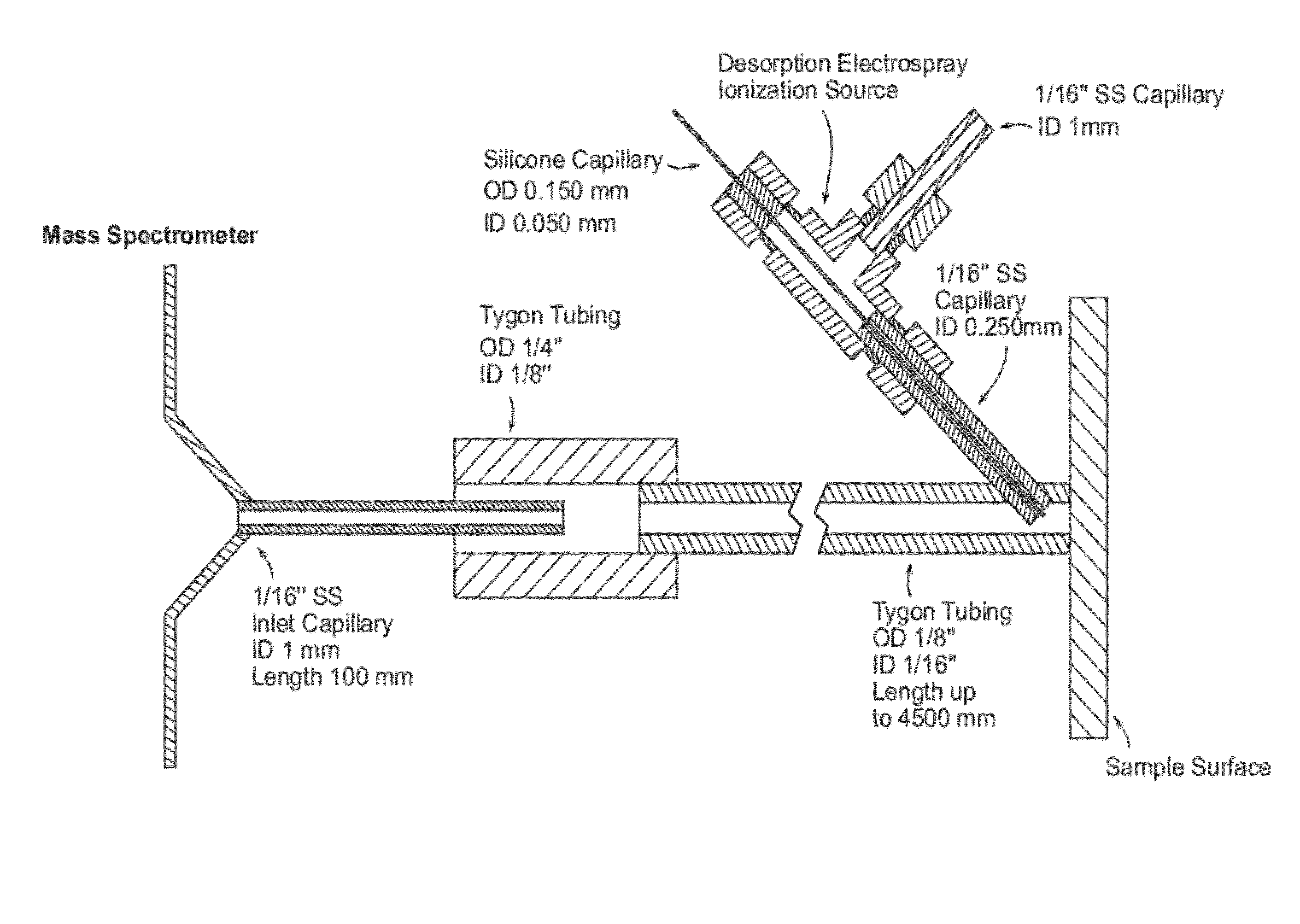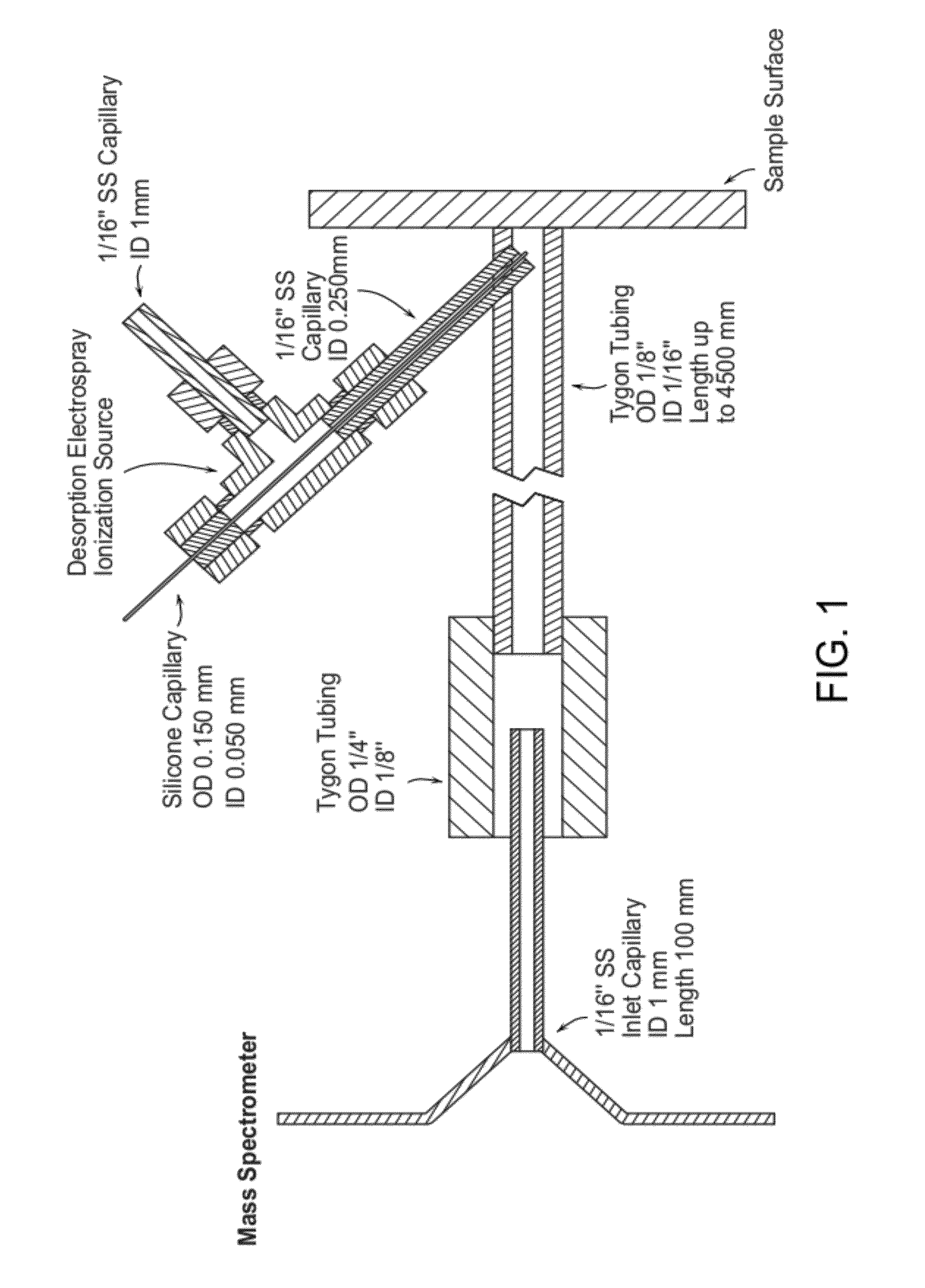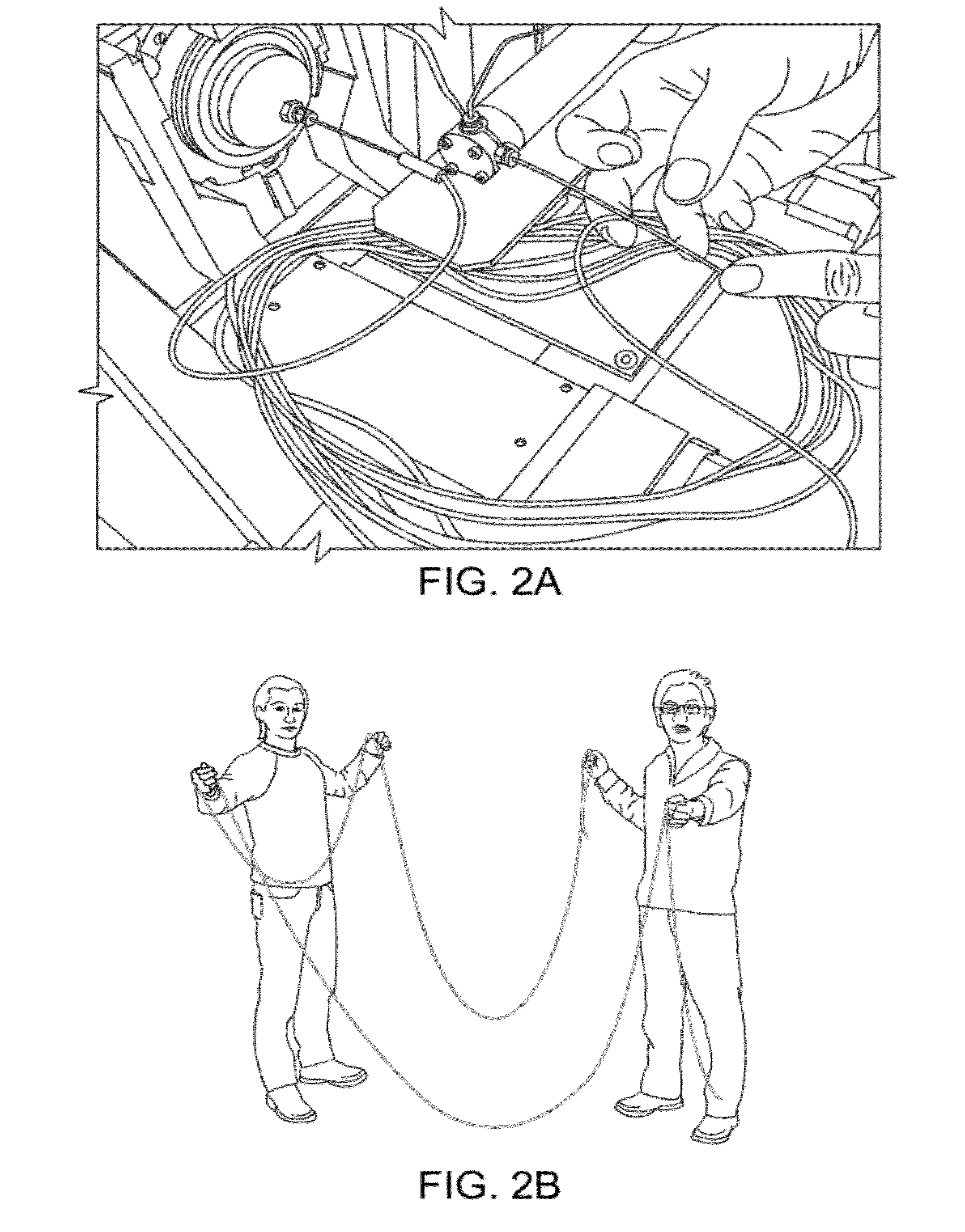Enclosed desorption electrospray ionization probes and method of use thereof
a technology of electrospray ionization and probes, which is applied in the direction of catheters, instruments, separation processes, etc., can solve the problems of high voltage removal from the spray source, tissue has to be taken out of the human body, and most solvents used in normal desi are not suitable for in vivo analysis
- Summary
- Abstract
- Description
- Claims
- Application Information
AI Technical Summary
Benefits of technology
Problems solved by technology
Method used
Image
Examples
example 1
System Setup
[0045]FIG. 1 is a schematic view of an enclosed DESI probe coupled with a mass spectrometer. The transmission tygon tubing (length 1.0-4.5 m) is sealed with the sample surface, including tissue cross-section and thin, allowing ions generated by desorption electrospray ionization (DESI) source to be vectored by the nebulizing gas flow. The counter side of tubing has a large diameter than the inlet capillary, avoiding the suction of exhaust gas into the mass spectrometer.
[0046]The sprayer is inserted into the transmission tubing. The spray outlet is about 3 mm away from the sample and almost vertical to the surface. The outer stainless steel tube carries Nitrogen as the nebulizing gas (O.D. 1 / 16″, I.D. 0.250 mm). The inner fused-silica solvent capillary extends approximate 0.5 mm beyond the gas tubing with an O.D. of 0.150 mm and I.D. of 0.050 mm. Methanol-water 50:50 (% vol / vol) is used as the solvent spray at a rate of 3 μL / min, while the nebulizing pressure ranges from ...
example 2
Analysis of Tissue
[0048]FIG. 3 is a typical negative ion mass spectrum of rat brain tissue cross-section using an enclosed DESI probe with 1.0 m 1 / 16″ tygon transmission tubing by a commercial Thermo-Fisher mass spectrometer. The major ions observed in the low mass to charge region (m / z 200-400) correspond to deprotonated fatty acids including palmitic acid (16:0) m / z 255.23, oleic acid (18:1) m / z 281.25, stearic acid (18:0) m / z 283.26, arachidonic acid (20:4) m / z 303.23, and docosahexaenoic acid (22:6) m / z 327.23. In the high mass to charge region (m / z 700-1000), the major ions detected correspond to four main lipid classes: plasmenylglycerophosphoethanolamines(plasmenyl-PE), glycerophosphoserines (PS), glycerophosphoglycerols (PG), sulfatides (ST), and glycerophosphoinositols (PI). The (X:Y) behind each class represents the number of carbon atoms and number of double bonds in the fatty acid chains, respectively. The (hX:Y) means the lipid belongs to ahydroxylatedsulfatide species....
example 3
Different Size Transfer Members
[0050]FIG. 4 shows negative ion mass spectra of the same rat brain tissue cross-section using (a) an enclosed DESI probe with 4.5 m 1 / 16″ tygon transmission tubing (nebulizing gas pressure 200 psi), (b) an enclosed DESI probe with 1.0 m 1 / 16″ tygon transmission tubing (nebulizing gas pressure 160 psi), and (c) a regular DESI (nebulizing gas pressure 140 psi) by the Orbitrap mass spectrometer.
[0051]The main peaks in the mass spectra are corresponding to lipid including m / z 726.54plasm-PE (36:2), m / z 750.54plasm-PE (38:4), m / z 774.54plasm-PE (40:6), m / z 788.54 PS (36:1), m / z 806.55 ST (18:0), m / z 821.54 PG (40:6), m / z 834.53 PS (40:6), m / z 862.64 ST (22:0), m / z 878.60 ST (h22:0), m / z 885.55 PI (38:4), m / z 888.62 ST (24:1), m / z 890.64 ST (24:0), m / z 904.62 ST (h24:1), m / z 906.63 ST (h24:0), and m / z 916.65 ST (26:1).
[0052]The relative abundance of the same lipid in each mass spectrum is different from each other mainly due to the different parts of the sam...
PUM
 Login to View More
Login to View More Abstract
Description
Claims
Application Information
 Login to View More
Login to View More - R&D
- Intellectual Property
- Life Sciences
- Materials
- Tech Scout
- Unparalleled Data Quality
- Higher Quality Content
- 60% Fewer Hallucinations
Browse by: Latest US Patents, China's latest patents, Technical Efficacy Thesaurus, Application Domain, Technology Topic, Popular Technical Reports.
© 2025 PatSnap. All rights reserved.Legal|Privacy policy|Modern Slavery Act Transparency Statement|Sitemap|About US| Contact US: help@patsnap.com



